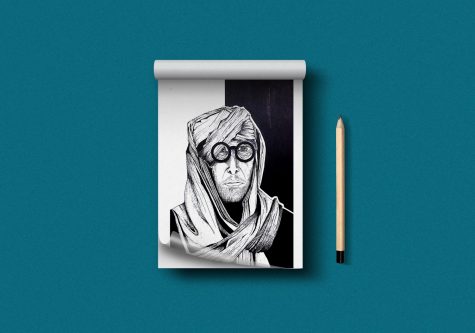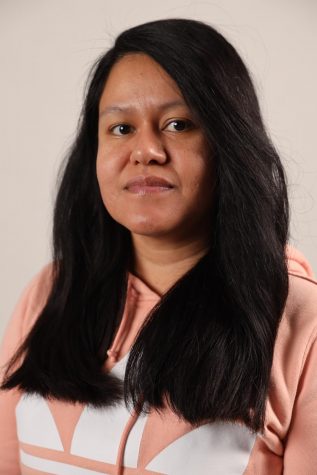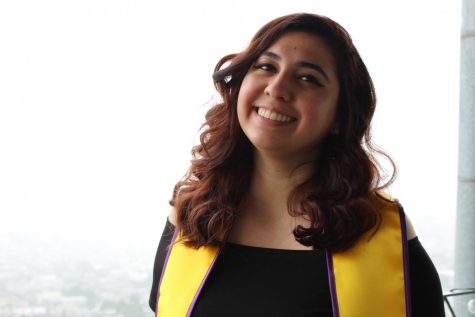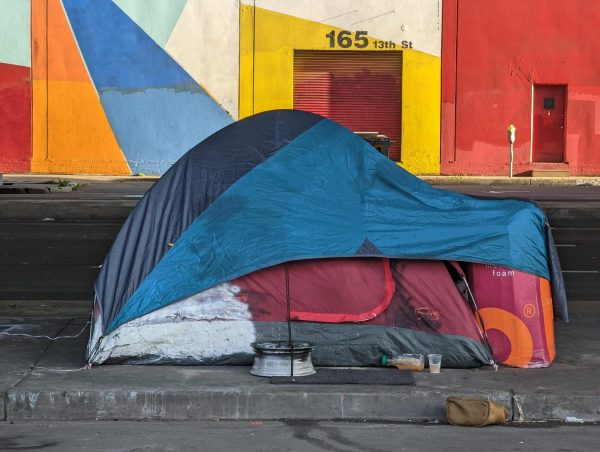School budget cuts put the arts at risk
Character Designs, Digital Illustration and Concept artist Priya Thaker enjoys creating vivid visual pieces outside the classroom during her time at SF State as a MA, Graphic Design student.
March 3, 2020
The Trump administration has decreased the Department of Education funding by $5.6 billion or 7.8% in the fiscal year 2021 budget. As the shortage in budget trickles down schools will begin to make department and program cuts.
With a shortage to the budget, question who and what departments need to be cut ring louder than the quality of education students will receive. As departments make their way onto the cutting board it is crucial that art within the classroom and curriculum stay intact.
The 2018-2019 academic year ended with a total of four students with the diploma of Art, nine with Art Education, nineteen with Art History and 57 with a degree in Studio Art.
“Growing up in Wilmington, CA that [museums/art] wasn’t talked about. The first museums that I would go to were on field trips because that is all you could afford,” said Kayla Hernandez, a transfer student from Los Angeles Harbor College majoring in Art History at SF State. “Through education and through school giving me that opportunity is how I fell in love with it [museums/art]…why I’ve always wanted to do it since I was in high school.”
A reputation or criticism of this field is evident through comments and the constant need to see if it adds value within other fields of education. We have all heard the snarkiness, “but a child could do that” or “does it stimulate the thought process in order to accelerate in math,” as mentioned in a feature article by American Psychological Association attempting to shed light on the myth of it all.
According to the experiments conducted for the American Psychological Association article it has found that people can actually tell the difference between a child’s art piece and a professional artist piece. There is clear intentional movement between a professional artistic piece that won’t show in a child’s piece.
Art is often used to accelerate other fields of education, but does it have to? According to American Psychological Association, art is proven to not boost any educational fields but that should be no reason to discredit it. Art is much more important on its own. It is its own entity, so it should be seen as so.
Art can range from drawing cartoons, digital art, painting, printmaking, sculpting, risography, music, dance, and the list goes on. Each one is different from one another but they are all used to create conversations and impact the way we see things.

There is a direct line for students who are achieving so much in the studies of arts.
As a student who is not in the direct line of art but rather is currently majoring in the field of sociology with a minor in urban studies, transfer student Tariq Jacobs has decided to work on campus at the Associated Students Art Gallery because he believes it coincides with his major.
“Immersing myself in art galleries and seeing people expression through their perspective and their cultural views, it allows me to gain more knowledge about the world and societies inside of them, which coincides with my major,” said Jacobs.
Art can be something we choose to follow or create in order to make a statement. Then these statements that were intentional or an outline of history make their way into the classroom because the art is a visual addition to lectures. Students like Ada Reyes, a Latinx Studies major with a minor in Race and Resistance find the conversation of art within the classroom at SF State a teaching method that goes hand in hand.
“For Latinx studies and Race and Resistance studies I feel like when we look at art it’s always documenting our experience and I feel like that is already resistance,” said Reyes, a poet and student. “So, my art is resistance and the reason why I am in my studies is to continue documenting everyone’s experiences and showing the true representation of ourselves.”
Struggling artist Tirajini Patel had a more complicated route than most students.
“My parents are immigrants who’ve moved here to create a better life for me. I grew up on survival, in a two bedroom apartment with nine people so my family didn’t see art as a career and for a long time I didn’t either,” said Patel.
She was unaware of the whole art world. Art wasn’t something Patel’s parents understood initially, and there is a lot of pressure for her to be successful. She put pressure on herself. Art is risky and it’s a gamble. There’s a chance you’ll be struggling for the rest of your life so she “played” it safe and became an accounting major and worked in the government. Patel’s parents were happy with her being on the “right path”.
However she found herself miserable and it was affecting other areas in her life. She started staying in more, keeping things to herself, even looking for excuses to skip work or school.
“I said to myself ‘This is going to be the rest of my life. Can I even do this?’ So one day I researched the type of jobs you can get in the arts and pay, it gave me confidence that I can make it without going the standard American dream path I was headed,” said Patel.
They say that families come around when they see the heart of the child working together and that’s definitely what happened for Patel. She was a student of accounting, math, “hard-working”. Seeing her art made her proud and therefore it made her parents proud way later on after she had to define the difficulty with them.
“I left my university[Sacramento State] and took art classes at the community college. I know my parents weren’t too keen on that,” said Patel. “Their dream for me is to graduate and definitely not in the arts. I decided to stay at my job to keep them satisfied for now. But while taking those classes a fire sparked and I knew I had to work to cover up for lost time.”
Not only does art let you expand your mind, but it allows students to express what is lingering within. Visual art represents a powerful resource for one’s mental and physical well-being. However, little is known about the underlying effects at the neural level.
In Germany they conducted a study that allows the brain to react in a different way when sculpting a piece. The study showed that the functional connectivity in the group was related to psychological resilience (i.e., stress resistance). Their findings were the first to demonstrate the neural effects of visual art production on psychological resilience in adulthood.
At the University College London, professor Semir Zeki, chair in Neuroaesthetics, conducted experiments that showed an increase of blood flow in certain parts of the brain while viewing beautiful pieces of art. The approximately 10 percent increase of blood flow in this art experiment compares to the equivalent to gazing at a loved one.
While it has been shown that art doesn’t help students get better in other educational fields, the positive effects it has on our brains shouldn’t be ignored.
















